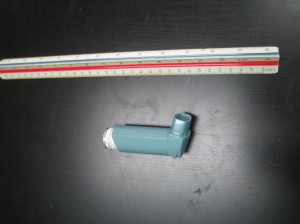It is important to know that an asthma attack during pregnancy is an emergency situation; therefore, medical attention should be sought immediately for the betterment of the mother and child. For more information about recognizing and helping pregnant women having asthma attacks take a St Mark James first aid and CPR course.
Symptoms
Some of the symptoms of an asthma attack during pregnancy include:
- Skin may seem gray or blue
- The mother might have difficulty walking talking or even thinking because she will be suffering from breathlessness
- The ribs and the neck may seem to be moving while the mother breaths
- The baby may be distressed and thus, there will be a reduction in fetal kick counts
Treatment
If you see a pregnant woman in distress due to an asthma attack, try to find out if she has an emergency plan for an asthma attack while she is pregnant. The treatment options may be provided by her health care provider. If so, follow the treatment plan and follow each instruction carefully. The treatment plan may mention that you have to call the health care provider in case there is any medication or drug the mother has to take for quick-relief.
Call for emergency medical help and in the meantime, follow these steps:
1. Administer first aid for asthma attack
- Allow the mother to sit comfortably, preferably in an upright position. Any position she is comfortable with will work

Picture of a asthma inhaler - Loosen any tight clothing and accessories including necklaces and belts
- If the mother has an inhaler or pump, encourage her to use it until she feels better
- If the mother does not have an inhaler, take one from the first aid kit, borrow someone else’s or ask someone to get one from a pharmacy immediately
2. Provide the mother with a inhaler having a spacer, if present
- To use the inhaler, remove the cap first and then shake the inhaler well
- Insert it into the spacer
- Allow the mother to breathe out fully and make sure she seals her mouth properly around the mouthpiece
- Encourage the mother to breathe in slowly from her mouth. Ask her to then hold her breath for about 10 seconds
- Next, ask her to give 4 puffs with an interval of 1 minute between every puff she makes
3. Ask the mother to use an inhaler without a spacer
- Just like the one without the spacer, remove the inhaler’s cap and shake it well
- Allow the mother to breathe in slowly. Each time she breathes in, press the inhaler downwards
- Make sure she breathes as slowly and deeply as possible. This should be done for about 5-7 seconds. Ask her to hold her breath for about 10 seconds afterwards
- Ask the woman to make 4 puffs, with a one minute pause between each puff she makes
4. If breathing problems persist, continue using the inhaler
- Once 4 puffs have been made, pause for 4 minutes. In case, she is still having trouble breathing, repeat with 4 more puffs
- If problem still persists, ask her to give four puffs again with 4 minutes pause between each set of 4 puffs until the ambulance arrives to receive her
- In case of a severe asthma attack, make her give 6-8 puffs with a 5 minute interval between each set
5. Continue care and observe any changes
- If the mother is feeling drowsy, do not assume that symptoms are improving. It just might be a sign that the condition is getting worse
- If she stops wheezing, do not assume she is getting better–the condition is getting worse.
In the emergency room, the mother will be provided with oxygen, intravenous steroids and inhaled drugs. Do not worry, these treatment methods will not cause any harm to the mother or baby. The mother may be hospitalized so that both mother and baby can be taken care of and treated in case of another asthma attack.
More Information
For more information about asthma and other respiratory emergencies enrol in St Mark James first aid training (register here).
Related Video